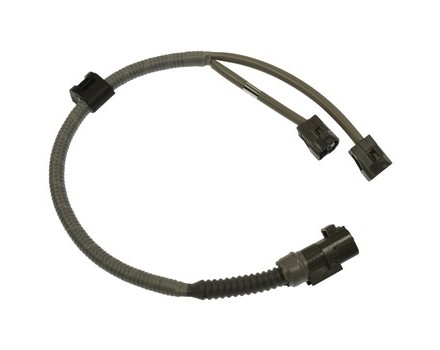Wire, Cable and Related Components
Filter Options
Important: To get started, click the blue "Filter Options" button to select your vehicle and then use the filters to narrow your options.
Important: To get started, select your vehicle on the left and then use the filters to narrow your options.
What are Wire, Cable, and Related Components?
Wire, Cable, and Related Components are components in a vehicle’s ignition system that provide a conductive path for current to flow from the ignition coil to the spark plugs. They are a critical part of the ignition system that helps the spark plugs ignite the fuel-air mixture that powers the engine.
What is the purpose of Wire, Cable, and Related Components?
The purpose of Wire, Cable, and Related Components is to provide a conductive path for current to flow from the ignition coil to the spark plugs, which in turn ignites the fuel-air mixture for the engine.
How can I determine if my Wire, Cable, and Related Components are faulty?
You can check for a faulty Wire, Cable, and Related Components by checking for visible signs of wear and tear such as frayed or broken wires, corrosion, or loose connections. You can also check your car’s spark plugs to see if they are sparking properly, which can be an indication of a faulty Wire, Cable, and Related Components.
Can a faulty Wire, Cable, and Related Components cause damage to my vehicle?
Yes, a faulty Wire, Cable, and Related Components can cause damage to your vehicle if not replaced in a timely manner. A faulty Wire, Cable, and Related Components can affect your vehicle’s ignition system and can cause misfires and other problems with the engine.
How do I replace Wire, Cable, and Related Components?
Replacing Wire, Cable, and Related Components can be done relatively easily with the right tools. Before replacing, make sure the ignition switch is in the “Off” position. Disconnect the negative battery cable and remove the spark plugs.
- Disconnect the Wire, Cable, and Related Components from the spark plugs, ignition coil, and distributor.
- Install the new Wire, Cable, and Related Components in the same manner.
- Connect the negative battery cable.
- Install the spark plugs and start the engine to check for proper operation.
How often should I inspect my Wire, Cable, and Related Components?
It is recommended that you inspect your Wire, Cable, and Related Components at least once a year or every 10,000 miles, whichever comes first. This will help ensure that they are in good condition and free of any visible signs of wear and tear.

